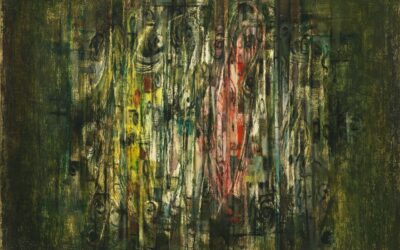What is Clean Language and Symbolic Meaning Therapy?

Clean Language and Symbolic Modeling is an innovative approach to psychotherapy that helps clients explore their inner world and facilitate personal transformation. Developed by counseling psychologist David Grove in the 1980s, this model uses simple, “clean” questions and metaphorical symbolism to assist clients in uncovering their subconscious patterns, resolving trauma, and achieving their therapeutic goals.
Core Tenets and Assumptions
The core premise of Clean Language and Symbolic Modeling (CL/SM) is that the client has within themselves the resources and wisdom needed for healing and growth. Rather than the therapist imposing their own interpretations or advice, CL/SM takes a non-directive, client-centered approach. Key assumptions include:
- The client’s inner symbolic world provides a rich map of their psyche
- Metaphor and symbol are the primary language of the subconscious mind
- Asking “clean” questions, devoid of the therapist’s assumptions, allows the client’s inner world to emerge organically
- The therapist’s role is to facilitate self-discovery, not to analyze or push an agenda
- Change happens by developing new perspectives and metaphors, not by directly challenging old patterns
Origins and Development
CL/SM was pioneered by New Zealand-born therapist David Grove (1950-2008). Grove initially studied engineering before discovering his passion for counseling and psychotherapy in the 1970s. He was strongly influenced by the work of hypnotherapist Milton Erickson, anthropologist Gregory Bateson, and the emerging field of NeuroLinguistic Programming (NLP).
In his therapeutic work, Grove noticed that clients naturally used metaphor to describe their issues and inner experiences. He began experimenting with ways to elicit and explore these metaphors using simple questions, free of interpretation or judgment. This led to the development of Clean Language – a set of questions using the client’s exact words to help them unpack their symbolic world.
Grove teamed up with NLP trainers Penny Tompkins and James Lawley in the late 1990s to further codify and teach Clean Language. They coined the term “Symbolic Modeling” to describe the process of constructing a model of the client’s inner symbolic world. Tompkins and Lawley authored the first major book on the topic, Metaphors in Mind, in 2000.
Timeline of Key Events
- 1980s – David Grove develops Clean Language through his therapeutic work
- 1989 – Grove gives first public workshop on Clean Language in the UK
- Late 1990s – Penny Tompkins and James Lawley begin collaboration with Grove
- 2000 – Metaphors in Mind by Tompkins and Lawley published
- 2005 – Grove publishes Resolving Traumatic Memories: Metaphors and Symbols in Psychotherapy
- 2006 – First Clean Language conference held in London
- 2008 – David Grove passes away at age 57
- 2000s-present – Clean Language increasingly integrated into coaching, education, and business contexts
Working with Trauma, Self and Identity
CL/SM takes a unique approach to working with trauma and identity issues. Rather than directly revisiting or reprocessing traumatic memories, it focuses on uncovering the client’s inner symbolic landscape around the trauma. The therapist uses Clean Language to help the client develop new metaphors and symbols that allow a different relationship to the traumatic experience.
Identity and sense of self are also understood metaphorically in CL/SM. Clients are facilitated in exploring their different “selves” or “parts” as symbolic entities, each with their own perspective and wisdom. The goal is not to eliminate parts of the self, but to help them dynamically integrate and evolve.
Techniques and Interventions
CL/SM employs a number of specific techniques and interventions, all based around Clean Language questioning and working with client metaphors. Some key interventions include:
- Developing Metaphor Landscape: Using Clean Language questions to elicit and map out the symbolic environment and elements related to the client’s issue
- Modeling Perspective: Inviting the client to explore the issue from various physical and perceptual positions within their metaphor landscape
- Moving Time: Facilitating the client to imaginatively move forward or backward in time within the symbolic world to find resources and solutions
- Engaging Metaphor Senses: Asking the client to describe the sensory qualities of symbols to deepen their symbolic experience
- Maturing Metaphor: Allowing symbols and metaphors to dynamically shift, interact, and evolve towards resolution or a new way of being
Rather than being rigidly standardized, these techniques are fluidly applied based on following the client’s unique symbolic world.
Research and Evidence-Base
As a relatively new model that emphasizes subjective symbolic experience, CL/SM does not yet have a large base of quantitative empirical research. Most evidence for its efficacy is based on qualitative case studies and anecdotal reports from practitioners and clients.
However, recent years have seen increasing research interest in CL/SM, with studies suggesting its usefulness for issues such as PTSD, addiction, and chronic pain. A 2015 review in Counselling and Psychotherapy Research found preliminary evidence for the effectiveness of CL/SM, while noting the need for more rigorous trials.
Some have argued that the highly personalized, metaphorical nature of CL/SM makes it challenging to assess using standardized quantitative measures. Proponents suggest that alternative research approaches, such as descriptive phenomenological methods, may be more appropriate for capturing its effects.
Modern Applications and Integration
While originally developed as a therapeutic model, Clean Language and Symbolic Modeling have found growing application in diverse fields such as coaching, education, organizational development, and market research. The non-directive, constructivist principles of CL/SM lend themselves to facilitating insight and change in many contexts beyond psychotherapy.
Many modern therapists are also finding ways to integrate Clean Language techniques into their existing approaches. The “clean” questioning style can be a valuable addition to the therapeutic toolkit, whether one is practicing CBT, psychodynamic, or solutions-focused therapy. Used judiciously, Clean Language can help clients gain new awareness of their patterns and internal world without excessive direction from the therapist.
Some specific ways CL/SM can enhance therapeutic practice include:
- Helping clients access subconscious wisdom through symbolic experience
- Decreasing risk of therapist counter-transference by minimizing interpretation
- Providing a gentler approach to trauma work that reduces risk of re-traumatization
- Enhancing client engagement by respecting and exploring their unique inner world
- Maintaining a constructive focus oriented around the client’s internal resources
As the applications of Clean Language and Symbolic Modeling continue to expand, therapists from diverse backgrounds are likely to find new and creative ways to embrace this innovative approach. By learning to work “cleanly” with client metaphors, the therapeutic profession can add a powerful tool for transformation and growth.
Bibliography and Further Reading
- Harland, P. (2012). Trust Me, I’m The Patient: Clean Language, Metaphor, and the New Psychology of Change.
- Lawley, J., & Tompkins, P. (2000). Metaphors in Mind: Transformation through Symbolic Modelling.
- Owen, N., & Jago, W. (2020). Coaching with Metaphor: A Practical Guide for Coaches and Leaders.
- Silbert, A., & Tompkins, P. (2017). Musing on Maps: Orientation and Exploration with Clean Language.
- Sullivan, W., & Rees, J. (2008). Clean Language: Revealing Metaphors and Opening Minds.
- Tompkins, P. & Lawley, J. (2003). Clean Space: Modeling Human Perception through Emergence.
- Way, M. C., & Tosey, P. (2015). Constructivist Transformative Learning Theory: An Approach Using Metaphor and Symbolic Modelling.
- Walker, C. (2014). From Curiosity to Contempt: Creating the Conditions for Groups to Collaborate Using Clean Language and Systemic Modelling.
- Online resources at cleanlanguage.co.uk and cleanchange.co.uk

























0 Comments